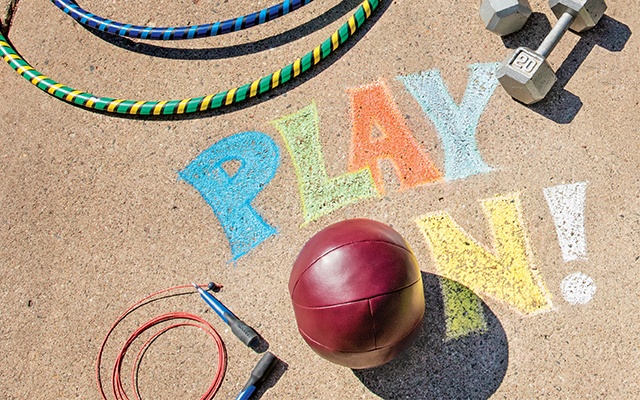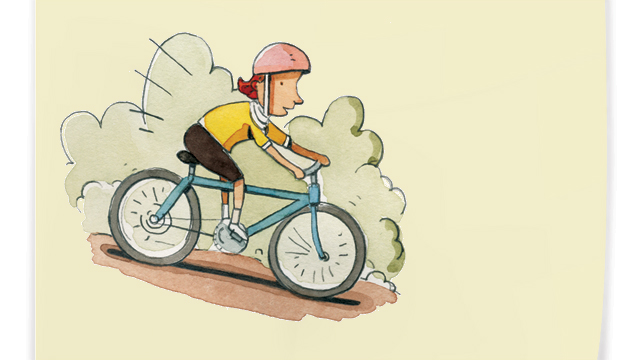At a powerlifting meet I attended several years ago — amid cheers of “Go get ’em!” and “You’ve got this!” — a coach called out three surprising words of encouragement to an athlete who was gearing up to squat with several hundred pounds loaded on her back: “Make it easy!”
Make it easy? There is nothing easy about powerlifting. It’s a strength sport based on performing your heaviest single rep for the back squat, bench press, and deadlift — and it was unimaginable to me that pushing your body to its limits could be described in that way.
I considered the incongruous words as the athlete positioned herself under the barbell, unracked the weight, and stepped back, awaiting the signal from the judges that she could begin.
And then I saw it: The athlete was cool as a cucumber. She didn’t fidget, adjust, or take any extra steps or breaths. Once she began her descent, she moved in a straight line until her thighs broke parallel to the ground. She didn’t bounce at the bottom of the squat for momentum or hitch her body to hoist the weight upward.
As she returned to her starting position, it was clear that she had worked hard. And yet, within the hard work, there was no extra work — she had made a record-breaking squat look miraculously easy.
So much about training, across activities and sports, clicked into place for me then. I realized that for as long as I had been exercising, I’d been ignoring cues to “make it easy” for fear that it meant taking it too easy.
In running and indoor cycling, I’d often heard about the importance of relaxing — but how did that make sense? My hard-set jaw and white knuckles meant I was really working!
In yoga, I’d been instructed on the concept of sukha — literally, “good space.” Sukha evokes comfort, with the body in alignment, the muscles free of strain, and the breath flowing easily. But even though “good space” sounded nice in my mind, it didn’t compute in my body as I tried to finagle my limbs into a perfect pose.
In dance I’d been schooled on grace — a lightness and ease of movement that I understood to be an innate part of who one is (and who I was not).
And there was the lie I didn’t realize I’d been telling myself: Athletic people are naturally graceful; they naturally move with lightness and ease. What they do is naturally effortless for them — and full of effort for the rest of us.
It occurred to me that ease, sukha, grace — whatever we call it — is a skill that can be learned. Could I find easy-ness in my movement practices without sacrificing my goals? I asked myself.
“Make it easy” was suddenly my mantra. I began with a question — Can I make this easier? — and checked in with my breath, with my form and alignment, with areas of tension in my body. What could I adjust? Where could I let go? What could I bring in?
I noticed: When running, I felt like I was alternating between holding my breath and gasping for air; like my fists were tightly bunched and my shoulders were scrunched up. It felt like I was working hard. But in reality, the erratic breathing and held tension just made running harder without any benefit.
I noticed: When I first began practicing yoga at 11 years old, I was very, very bendy. Over the years, my body changed — I became stronger and less flexible. But because I had certain ideas of what perfection and progress looked like, I tried to force my body to bend, sacrificing alignment and breath. I didn’t understand that alignment and breath — not some idealized vision of a pose — are the cornerstones of asana.
I noticed: Strength training, for me, was the embodiment of the word “hard.” Lifting heavy weights is hard. It takes hard work, physically and mentally. I was proud of being able to do hard things and understood that tackling weights in the gym made me more resilient to hard things in life.
But I saw that I was making necessarily hard work unnecessarily harder. Breathing, form, alignment, a balance of tension and relaxation — I considered these training concepts in a cursory fashion, secondary to successfully completing a lift, and was willing to sacrifice them in order to achieve more reps or heavier weights. I got stronger, but I found that my recovery suffered and I had more aches and discomforts.
In all these instances, I worked on refocusing my efforts on moving with more ease, and ushered in a new era in my training that prioritized what I needed in a given moment, rather than what I thought I “should” be doing.
After years of practice, I still catch myself pushing ease away and fearing that by making my movements easy, I’m somehow taking it too easy on myself. I have to consciously remind myself that these are two different things: It is possible to work hard without doing extra work — without working against myself.
This article originally appeared as “Moving With Ease” in the May 2021 issue of Experience Life.





This Post Has 2 Comments
As a Young man I used to lift very heavy weights and now as a seventy year old man I feel the negative impacto that those heavy weights had on every joints in my body. So now, I practice Yoga, Lots of stretching and use no more that ten pounds of Weight with many reps during my exercise routine. I also do all of my exercises lying down. My Weekly routine also includes two Hours of rowing.
I feel very healthy and strong.
Loved your article, something I subscribe to and aspire to. I ask my patients if “they could be any animal in the animal kingdom other than human, what would they be?” I ask this so that they may describe to me the feeling they imagine animals feel when they move; with grace, ease, fluidity, power, strength, purpose, happy, relaxed, coordinated…. Then I ask them to become more like that animal when they brush their teeth, drive the car, take out the garbage, sit at the computer, etc. Hopefully, they will see how stiff and uptight and restricted they are in their movements and change their mindset to match how their animal might move. So far, after 40 years of asking, it’s still working. (a panther, btw)